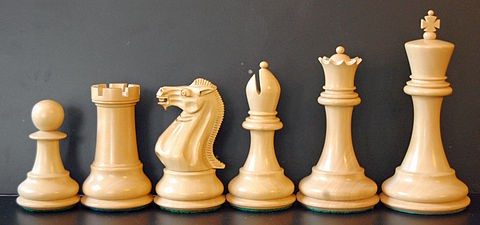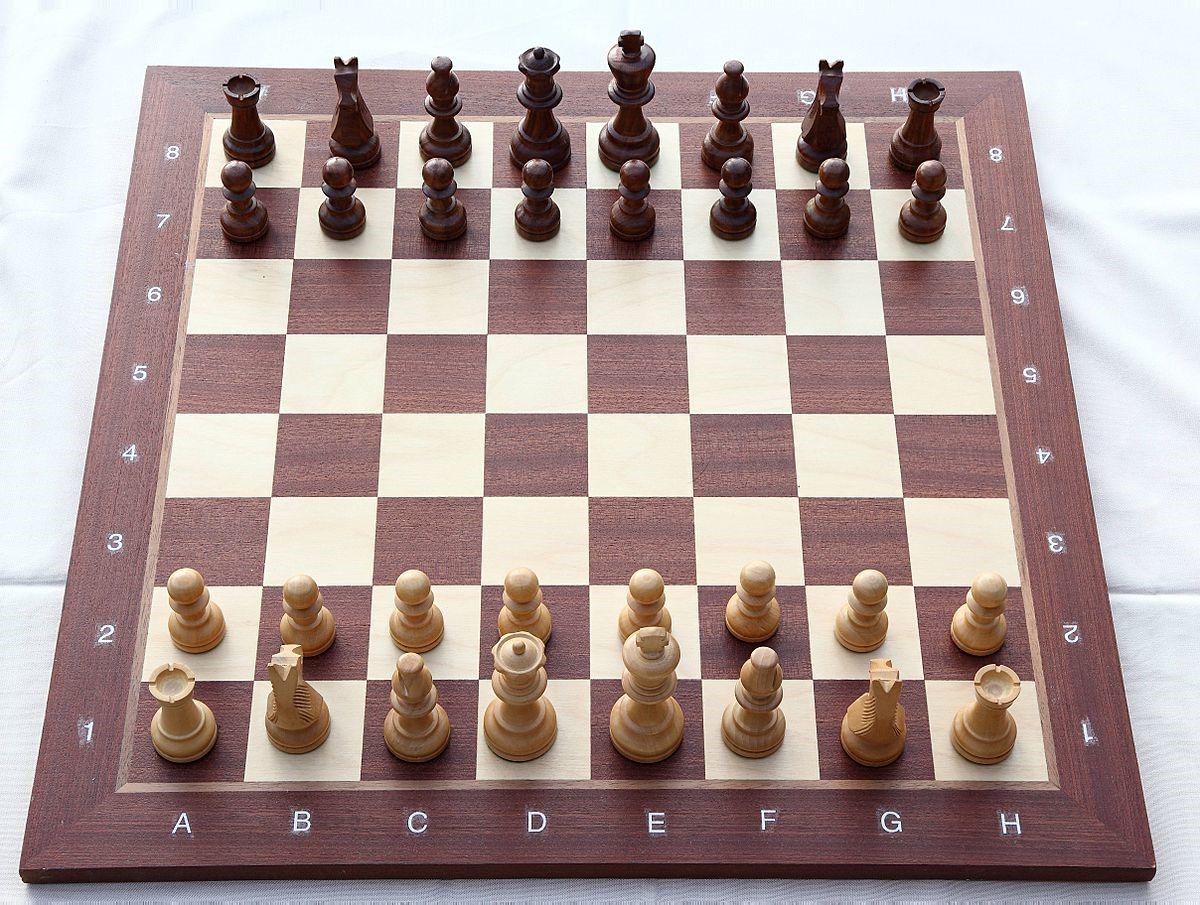
Many kids learn to play chess in school or after school. I was a member of my school’s chess club when I was in the 7th and 8th grades. I only played chess a few times since those junior high days, but that has changed over the past several months. When the Covid-19 pandemic started, I began working on a few 1,000-piece puzzles, but was really getting bored. In fact, some stores were running out of puzzles. In October, Netflix mini-series, “The Queen’s Gambit,” came out, and within the first month had over 62,000 viewers. The show told the story of one girl’s struggle with drug and alcohol dependency, and how she (Anya Taylor-Joy) went from underdog to chess master. After seeing the show and since I had had my fill of puzzles, I decided to give chess another try. I found out that chess set sales had increased by 200% since the Netflix mini-series came out, but nonetheless, I got a hold of one. Since then, I have been playing a lot of chess with friends and online. I’ve come to realize there are quite a few similarities between project management and chess. In fact, chess lessons, when applied to project management, can be extremely helpful to project managers (PMs).
The Board and the Players
As you can see from the figure below, a chess board is perfectly symmetrical—the boundaries are made up of 64 squares evenly divided between 32 light squares and 32 dark squares. The board contains 8 rows (1-8) and 8 columns (A-H). Upon the board are placed two matching piece armies (white and dark). Half of the pieces are Pawns (rows 2 and 7) a.k.a. the soldiers or the team’s worker bees. The four corners (rows 1 and 8) house the Rooks (or Castles)—they have a lot of movement power (like executives). Next to the Rooks are the Knights and the curvy Bishops, which remind me of different team leads that PMs depend on for their projects. The most mobile piece is the Queen (the white one is pictured on D1). I consider her to be a strong sponsor. Next to the Queen is the King (pictured on squares E1 and E8), who may represent the client.

Let’s say I’m the player (or the PM) of the white team. I’ll begin with an opening plan or strategy and execute it with the movement of my pieces (or team members). My goal is to successfully gain closure. The desired closure is to check-mate the opponent’s King, which means the King can’t escape. At that point, the game is over. A check means the opponent’s king is being attacked, but can still move out of check, interpose a blocking piece, or capture the checking piece. I’ll move on without going into a long narrative on how the pieces are maneuvered or the dozens of strategies that can be used to get a check-mate. It doesn’t take much time to learn the rules of the game, and I am sure many of you know how it’s played.
Three Stages that Make a Whole
Here is a quick breakdown on what each major stage entails in the game of chess:
- The Opening: The main objective is to effectively activate your opening moves or the beginning of your development strategy (or principles of play) to take control of the board.
- The Middlegame: This is where the opposing armies clash the most with a focus on using your tactics and piece combinations.
- The Endgame: The forces or pieces have been greatly decreased in number at this point, but check-mate hasn’t yet been delivered. The game is over when the opponent’s King is in check-mate.
Let’s now compare each major stage to the life of a project:
- The Opening: Definition of product requirements (systems and/or software) and analysis of it. Planning and strategy come into play here, and a bold first move or start is required!
- The Middlegame: This is where the design and development of the product occurs.
- The Endgame: Testing, implementation, and hopefully acceptance by the client.
Of course, the above could be modified depending on the methodology your organization is using, but you stay with me here, and we’ll see how chess strategy can be applied to the management of projects successfully.
Patience
Learning to be a good chess player requires patience. It also nurtures the ability to sit and systematically think. Usually after a grinding middlegame, I am mentally tired and low on patience. If I am ahead (have more pieces than my opponent), I need to exercise more patience to get a check-mate and win the game. Why? One of the most beautiful things about chess is that if your opponent only has a King left (or a King with a few other pieces that are blocked from moving), there is the possibility of ending the game with a stalemate (or draw). This is a situation where my opponent’s King is not in check, but can’t make a legal move (meaning any move would put it in check-mate). I have had a few endgames where I had many more pieces than my opponent and tried to go for the quick check-mate, but ended up in a draw because I didn’t have the patience to smartly move my pieces to avoid it. The bottom line is that patience is part of being a disciplined PM and a successful leader.
Space Strategies
Space refers to the geometric properties of shape, size, and distance. We often refer to a three-dimensional area (3D) and can determine the position of a point within that framework. If you add in the element of time, then you have what is often called a fourth-dimensional area (4D) or spacetime. Chess is really a game of physical spatial conquest done in a timely manner (watch The Queen’s Gambit and you’ll know that chess matches are indeed timed). Usually, the player that controls the most space early on controls the game. Maneuvering your pieces (or team members) is much easier when you have the space to move because you don’t have any pawns in the way. Other benefits include making it easier to get from one side of the battlefield to the other side or avoiding being in a cramped position (i.e., having most of your team members sitting in a corner). Of course, to safely protect your King (or head honcho), you need to have extra space (or squares) to move him to. This helps you to avoid a future check. If you don’t have extra safety spaces or enough time to create them, you could be setting yourself up for a check-mate.
There are many laws of space in a chess game. A couple include trying to control the center of the board before attacking on the sides of the board, or, during the endgame, consider bringing your King to the center of the board which makes it harder for your opponent to get a check-mate—this is especially useful if you are losing. It would be difficult to memorize all the laws of space, but they could be documented on a storage network or cloud storage service. I am referring to the idea of project documentation. As we all know, cost is usually dependent on the amount of disk space used.
In Microsoft Project’s Task Information dialog box > Predecessors tab, you can define the lag between dependent tasks. Lag (or overlap) between tasks comes about no matter what, but if you have a positive number in the lag field, this creates delay (shown visually in time and space in the Gantt Chart). If you have a negative number between dependent tasks, you will see an overlap between the two tasks on the Gantt Chart.
Summary
A key to playing chess well is to better understand the relationships between the pieces (or team members). You also must gain the ability to recognize patterns. When you see a pattern (or plan) that you are familiar with, the right moves surprisingly suggest themselves. Do you see the correlation to project management and chess, as I do? We aren’t the only ones! Chess is used in the study of the cognitive process, and in the development of artificial intelligence (AI).








olomi007
I’ve seen many applications of chess but this combination is a very unique and interesting one! I’m a professional chess player who works as a chess program manager at university. Some time ago I decided to gain a PMP certificate and came upon this article. I hope my chess experience (and a grandmaster title) will help me to become a project manager soon.
Ronald B. Smith, PMP
Thanks for the nice comments and congratulations on getting your PMP. I wish we lived in the same town so we could mentor each other. You might want to read my past MPUG articles (about three dozen) on being a better a better PM. I usually publish one article/month and the next one comes out next week. Also there are other fine articles from many authors on PM and MS Project that are worth reading. Take care – Ron
Bryan Conway
This is a creative and interesting angle on project management. I have been playing chess my whole life (I was taught by my immigrant great grandfather at a young age) and a PMP for a decade, and definitely see the the connection! Perhaps PMI could allow a certain amount of PDUs to be granted for hours spent playing chess each renewal period? 🙂